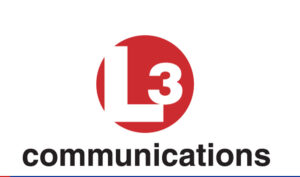Foreign intelligence services look for government employees and contractors in debt. This new report will make them realize the field is wide open for targeting.
(CNN) About 83,000 Defense Department employees and contractors with security clearances to protect the nation’s secrets have delinquent federal tax debts totaling $730 million, according to an internal government audit.
The findings in the new Government Accountability Office study raise security concerns for the U.S. government. Officials say employees and contractors who have financial problems are top targets of foreign intelligence agents.
Federal regulations governing security clearances say that a person “who is financially overextended is at risk of having to engage in illegal acts to generate funds” and that indebtedness should be among factors considered when someone applies for a clearance, the GAO study said. But the study found that government agencies in charge of the issue can’t readily collect data on tax debt, in part because IRS privacy rules prohibit sharing certain taxpayer data. . .
. . . Most accrued their unpaid tax debt after they received their clearances.
Of the 83,000 with tax debt, about 4,800 had IRS liens against their property. About 28% or 23,000 of them were subject to wage garnishment and other collection tactics by the IRS to collect taxes owed. . . .
More from the GAO report:
About 40 percent of the individuals are in a repayment plan with the IRS.
According to IRS data, about 34,000 of these 83,000 individuals with tax debt had a repayment plan with the IRS to pay back their debt as of June 30, 2012. The tax debt owed by those on a repayment plan was approximately $262 million.
About half of individuals with tax debt were federal employees. About 44,500 of the approximately 83,000 individuals with tax debt were federal employees, while the remainder were employees of federal contractors or had an “other” designation used to identify other categories of individuals. Federal employees owed approximately $363 million of the $730 million (about 50 percent) of delinquent taxes owed by DOD clearance holders.
About 25 percent of the individuals with tax debt were eligible for a top-secret or SCI clearance. About 20,400 of these 83,000 individuals were favorably adjudicated as eligible for a top-secret or SCI clearance during our time frame (Jan. 1, 2006, to Dec. 31,
2011), while the others were favorably adjudicated as eligible for a secret clearance.
DOD employees with top secret or SCI-level clearances owed over $249 million in tax
debt.
REPORT:
SECURITY CLEARANCES: Tax Debts Owed by DOD Employees and Contractors (GAO)
Read whole report (.pdf)
In summary, GAO found that about 83,000 Department of Defense (DOD) employees and contractors who held or were determined eligible for secret, top secret, or sensitive compartmented information (SCI) clearances, or related interim clearances, had unpaid federal tax debt totaling more than $730 million as of June 30, 2012.
DOD reported to GAO that about 3.2 million civilian and military employees and contractors held or were approved for similar clearances from January 1, 2006, to December 31, 2011, which was the time frame for GAO’s analysis.
According to data from the Internal Revenue Service (IRS), about 34,000 of these 83,000 individuals (about 40 percent) with tax debt had a repayment plan with the IRS to pay back their debt as of June 30, 2012.
GAO’s analysis cannot be generalized to individuals that were granted eligibility for security clearances and were non-DOD employees of the executive branch, employees of the legislative branch, or employees of the intelligence community.
As part of this work, GAO also identified individuals with unpaid tax debts who also had access to classified information.
DOD officials stated that individuals having access to classified information pose a greater risk because they have more opportunity to actually compromise classified information than a person who is only eligible to access classified information.
GAO found that about 26,000 of the 83,000 DOD employees and contractors with eligibilities who owed taxes (about 31 percent) had access to classified information, and they owed about $229 million in federal taxes as of June 2012.
In September 2013, GAO reported that additional mechanisms could improve federal agencies’ ability to detect delinquent federal tax debts owed by individuals determined eligible for security clearance, but statutory privacy protections limit access to this information (GAO-13-733).
During that prior work, officials from the Office of the Director of National Intelligence (ODNI) told GAO that they had formed a working group in 2012, in collaboration with the Office of Personnel Management (OPM) and other federal agencies to, among other things, explore whether an automated process for reviewing federal tax compliance could be established. GAO recommended that ODNI, in consultation with OPM and the Department of the Treasury, evaluate the feasibility of federal agencies routinely obtaining federal debt information from the Treasury Offset Program (TOP) system, or a similar automated mechanism.
TOP is a centralized offset program, administered by the Department of the Treasury, to collect delinquent debts owed to federal agencies and states. Both ODNI and OPM concurred with GAO’s September 2013 recommendation.
In June 2014, officials from ODNI’s interagency working group stated that, due to the legal and logistical challenges of obtaining sufficient federal tax compliance information from the Treasury’s TOP system, the working group began exploring additional sources of information, such as information on tax filing as well as tax debt status, to provide automated federal tax-compliance checks for the purposes of investigating and adjudicating clearance applicants, as well as for ongoing monitoring of current clearance holders’ tax-debt status.
In addition, ODNI officials stated that in January 2014 the IRS assigned a program manager to oversee the development or modification of IRS systems to accomplish automated tax compliance checks.
Officials from the interagency working group stated that they are also exploring whether an exception to section 6103 of the Internal Revenue Code, which generally prohibits disclosure of taxpayer data to federal agencies and others, would be advisable to facilitate the sharing of taxpayer information for the purpose of making security clearance determinations.
The officials stated their goal was to establish an automated federal tax compliance check by 2017, but the officials also noted that efforts to develop an automated system to perform a federal tax compliance check were still in the initial planning stages.
Why GAO Did This Study
According to ODNI, as of October 2013, over 5.1 million civilian and military employees and contractors held a security clearance.
Federal laws do not prohibit an individual with unpaid federal taxes from holding a security clearance, but delinquent tax debt poses a potential vulnerability.
This is the second of two reports that review the security-clearance process and mechanisms used to identify unpaid federal tax-debt information of applicants, employees, and contractors.
GAO’s first report focused on civilian employees and contractors in the executive branch, excluding DOD employees and contractors as well as known employees of intelligence agencies.
This report (1) identifies the number of individuals with unpaid federal taxes, if any, who are in DOD’s security-clearance database, and the magnitude of any unpaid federal tax debt; and (2) provides an update on GAO’s September 2013 recommendation.
GAO compared DOD’s security-clearance information to IRS data on known tax debts. GAO also reviewed relevant laws and regulations and interviewed officials from ODNI, the Department of the Treasury, OPM, and DOD.










